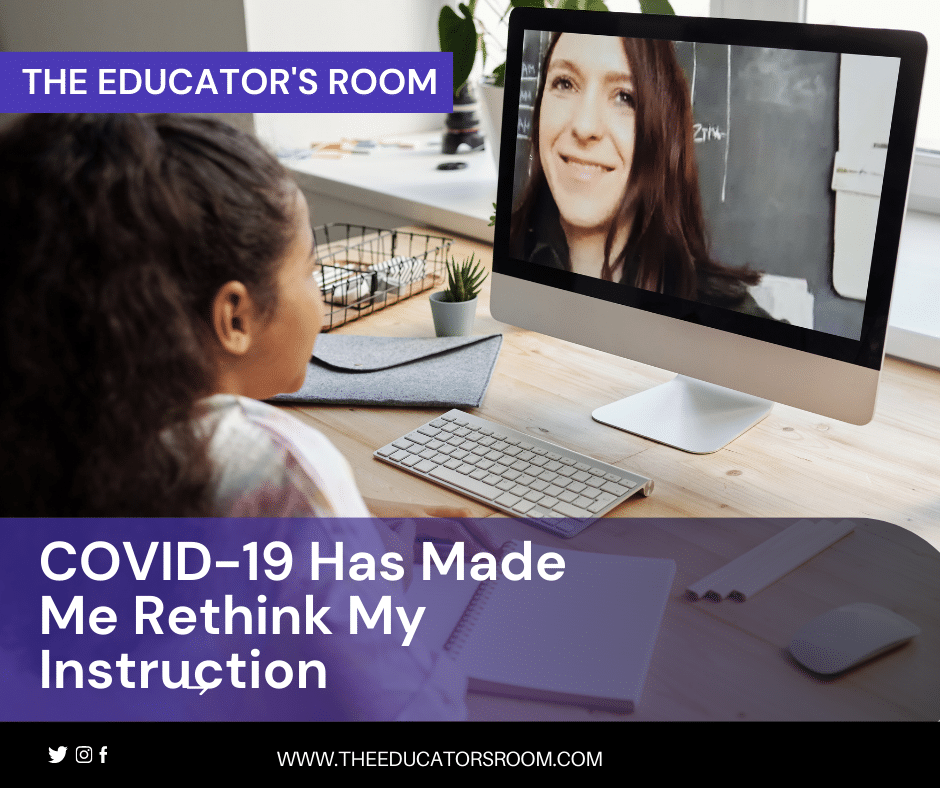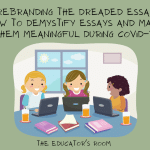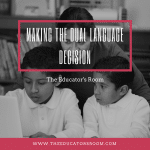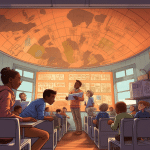We’re a week away from returning to in-person teaching for the new school year and the obvious anxieties and fear about being back at school, where the spread of COVID-19 feels inevitable and is on everyone’s minds. This year, teaching will take on new challenges and risks, and no amount of mental preparation will make me feel ready. In addition to feeling fearful of being in the classroom, I also realized that the nature of our teaching will have to change dramatically. It may have seemed obvious to others but I didn’t fully think about how my teaching would have to adapt during the pandemic.
For example, I won’t be able to do art/creative projects because my students can’t be sharing art supplies as they did before. Group work will be difficult and almost impossible because of social distancing. There are several other ways in which best teacher practices won’t be doable in this new climate, and these adjustments will look differently for various disciplines and teachers.
So, I’ve had to start rethinking my materials and lesson plans. Based on my experiences using these tools during my online teaching and prior to this year, I’ve suggested 5 online tools that might be helpful for teachers in Language Arts classrooms. I know that History & Social Studies, STEM, Music, Modern Languages may use other platforms, so I’m just making suggestions for the English teachers out there. As such, if you & your students are returning to school and have access to WiFi and appropriate technology in your classrooms, here are some online resources for humanities classes:
Canva – It’s an online graphic design platform where students can create graphics, images, posters, etc. As such, as teachers, you can use Canva to have students create the beautiful posters that you may have had them create on poster paper. Canva has recently partnered with Google to make the platform more accessible. Registration is free, and there is a version of it that allows for access to tools for free. I used to love hanging my students’ big posters around the room, but you can still print these (if you have access to printing) and put them on your classroom walls!
Google Read & Write – This is a good extension to Google Chrome, which allows users to make reading & writing more accessible. If you’re like me, then you want your students to actively engage with course materials, particularly readings. You can use Google Read & Write to have students highlight, create vocabulary lists, find facts, access a picture dictionary, which will enhance the reading experience while having students critically think about materials while learning how to be active readers.
Actively Learn – This is a super cool website, and it was recommended to me by a colleague of mine. It allows teachers to upload and access resources onto the site, and intentionally embed, polls, connections to other texts, vocabulary definitions, etc. within the text. This allows students to actively engage with course material. I used this website when I taught the cycle of poverty during a unit in English to provide information about how difficult it is to break the cycle of poverty. I uploaded an article about this topic, and students weren’t able to move forward in their reading without answering questions I asked them to answer, which were aimed at them gaining a deeper and richer understanding of the topic. It was a really useful tool, and I find that it’s a good way to have students really engage with the material while using technology in the classroom. It’s also free. As a teacher, you will have to create an account, and add your students (who will also have to create an account) using a code, similar to adding a student to a class on Google Classroom.

Storyboard That – In my class, I love to have students make comic strips as a way of having students practice the structure of a plot or to depict important parts of a novel we’re reading in class. Since my students can no longer share art supplies in class, Storyboard That would be a good alternative. It’s an online platform that allows students to create storyboards, which can be used to do similar things as a comic strip. There are different versions. The free version, which is most accessible for a class. There is also the Teacher option, which starts at $8.99USD, and this version has more features.
Parlay – This is the only website that I haven’t used personally but I was introduced to it this summer by another educator. It’s an online platform that allows students to participate in online discussions with one another. As teachers, we can track their participation, and students can comment on one another’s posts and engage in a live discussion. While I haven’t used this platform, I’m really intrigued by Parlay because it would allow students to talk and interact while social distancing.
I realize that having access to these platforms is a privilege. Many students, teachers, and schools do not have access to the tools that would allow for every student to use these tools. As such, I must acknowledge that. I understand that teachers who are at schools with limited computer access will face further challenges to carry out lessons, which tends to fall on deaf ears of those who are in power and can make real change.
For those who are non-Language Arts teachers who are able to use online platforms in their classroom, what are some of the tools that you’ll be using?










